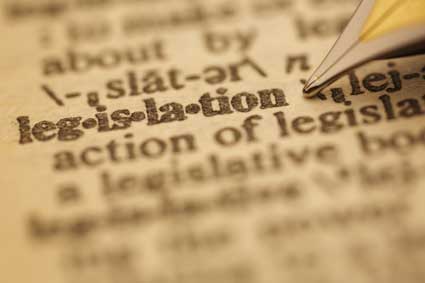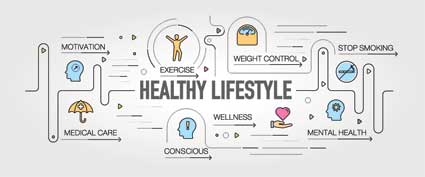Fieldwork Agencies:
The CDC, the Centers for Disease Control, has required that they combine the science of epidemiology with other public health disciplines so that assistance can be provided on a local level, a state level, and even an international level. Because the CDC represents a resource for public health agencies the programs and methods that it uses, it emphasizes services in the "field"; the actual site or setting where the problem exists. The epidemiological field investigation is the most important tool that the CDC uses in order to assist the agencies that require their help.
- The Communicable Disease Center was created in July 1946 by the Office of Malaria Control in War Areas and was given the responsibility to help state agencies with the control of communicable diseases.
- In October 1947, the CDC was made responsible for assisting the states to conduct epidemiologic investigations when there was a report of a communicable disease outbreak.
- The Epidemic Intelligence Service (EIS) program was created in 1941 in order to meet this need by increasing the number of field-trained epidemiologists in the United States. EIS officers help the CDC to respond to requests from state, local, and international public health agencies that require epidemiologic assistance.
The EIS initially investigated outbreaks of acute communicable disease, however since the 1960s, they have broadened their outreach to include chronic diseases, occupational health, injuries, and environmental health. The information that they have collected is of great archival value for state health departments and other agencies who need to look back and see what was done in a given situation.
Generally speaking, the CDC is the lead agency that works to control and prevent disease with its relationship with State health agencies. This is done by dispatching CDC staff to any state that needs epidemiologic field investigation assistance, including telephone consultations, and on-site technical assistance.
Each individual state has a legal responsibility to protect the health of the residents of that state, and as such, they have the prerogative of choosing to investigate the outbreaks and diseases themselves. The CDC usually will wait to be invited to participate in the investigation should the state deem it necessary.
From time to time, requests originate from a local public health agency, a hospital, a private citizen, or other Federal agency like the Indian Health Service. These special circumstances as well as interstate or multi-state outbreaks provide the CDC with the opportunity to take a leading role in initiating the necessary investigation.
The CDC will also give assistance to international health organizations like WHO, or to ministries of health in other countries. Whenever possible, the CDC personnel work under the direction of the state/local, or international public health officials who have requested the assistance. The CDC makes every effort possible to respond to any request for epidemiologic field assistance.
When a state or local government decides that they do not require the assistance of the CDC, they have the capability of conducting the investigation themselves. What is good to know is that if they have difficulty with the investigation, then the CDC is always there to back them up. Interestingly enough, a survey in 1983 determined that 39% of state epidemiologists working in State health departments had once worked for the CDC and are EIS alumnae. For many of the EIS investigators, working in the epidemiologic field investigations helped them to prepare for public service as epidemiologists in a state run public health agency.
Steps of an Outbreak Investigation:
When an outbreak is identified, there are specific steps that must be taken, and in a systematic order so that the outbreak can be quickly and easily identified and controlled. Working quickly is vital, as is getting the answer right. All epidemiologists are trained in this way, so that they can quickly minimize the number of deaths attributed to this new causative agent.
- Prepare for field work.
- Establish an outbreak existence.
- Verify the diagnosis.
- Define/identify cases.
- Characterize the outbreak with descriptive epidemiology
- Develop hypotheses
- Evaluate hypotheses
- As needed, redefine the hypotheses and perform additional studies.
- Put into place control and prevention measures.
- Communicate findings to the appropriate agencies and authorities.
The above steps are put in a theoretical order, but in the field, several steps may actually be accomplished at the same time. It could be, too, that the circumstances of the outbreak my dictate that things should be done in a different order.
In order to get a good understanding of a field investigation, the above outline will be further defined below:
1. Prepare for field work. As a field investigator, one must have the appropriate scientific background and knowledge to carry out the investigation, paying particular attention to administrative procedures. The investigator is to know his/her role in the field, and one's role must be agreed upon before departing for the outbreak area. This is especially true if the investigator is coming from outside the outbreak area.
2. Establish an outbreak existence. An outbreak or epidemic is when there is an occurrence of more cases of the disease than expected in a given area or among a specific group of people over a given period of time. The field investigator's first job is to verify that an outbreak is indeed happening. Some events will turn out to be outbreaks with a common cause, and others will be unrelated cases of the same illness. Still others can be unrelated cases of diseases that manifest similarly, but are actually different diseases.
3. Verify the diagnosis. When verifying the diagnosis, the investigator must review all clinical findings and laboratory results to ensure that the disease is what is expected and not something that has similar symptoms, but is actually something else entirely.
4. Define/identify cases. A case definition is establishing a standard set of criteria in order to decide whether a patient should be classified as being infected with the pathogen under investigation. This should include clinical criteria as well as identifying common characteristics such as time, place, and person. It is wise to use as many sources as possible when identifying cases and the methods must be appropriate for the setting and the disease in question.
5. Characterize the outbreak with descriptive epidemiology. After collecting some of the data, the outbreak can then be characterized by time, place, and person. This is sometimes done several times during an outbreak. Characterizing the outbreak/epidemic in this way is termed descriptive epidemiology, the investigator is describing what has occurred in the group of people being studied.
6. Develop the hypotheses. This is often started with the very first phone call, and then revised in the field after talking to some of the patients, the local public health officials/physicians, and then characterizing the new outbreak/epidemic by time, place, and person. The hypotheses must address the source of the infecting agent, the mode of transmission (vector), and the types of exposures that actually cause disease.
7. Evaluate the hypotheses. After a hypothesis is developed, it must then be evaluated and examined to determine if the hypothesis fits the evidence found at the site of the investigation. This is done by comparing the hypothesis/hypotheses with the established facts or by using analytical epidemiology to investigate whether chance may have had anything to do with it.
8. Redefine the hypotheses and perform additional studies. Sometimes it is difficult to establish that the given set of facts matches the hypotheses and the approach then needs to be reconsidered. This requires deeper investigating, looking for common links between the infected patient cases, visiting their homes, workplaces, etc. Consider different vectors, or new modes of transmission.
9. Put into place control and prevention measures. The primary goal of the investigator is to identify the causative agent as quickly as possible in order to put into place proper control and prevention measures in order to minimize the number of people infected. If the investigator knows the source of the outbreak, control measures can be implemented quickly. The investigator works to find the weakest link in the chain of infection; looking at destroying contaminated foods (as in the recent salmonella contaminations in spinach and tomatoes), sterilizing contaminated water, or destroying breeding grounds for mice or mosquitoes.
10. Communicate findings to the appropriate agencies and authorities. This is done with an immediate oral briefing to the local public health officials and other authorities and then a written report is required to establish the acquired evidence.

























